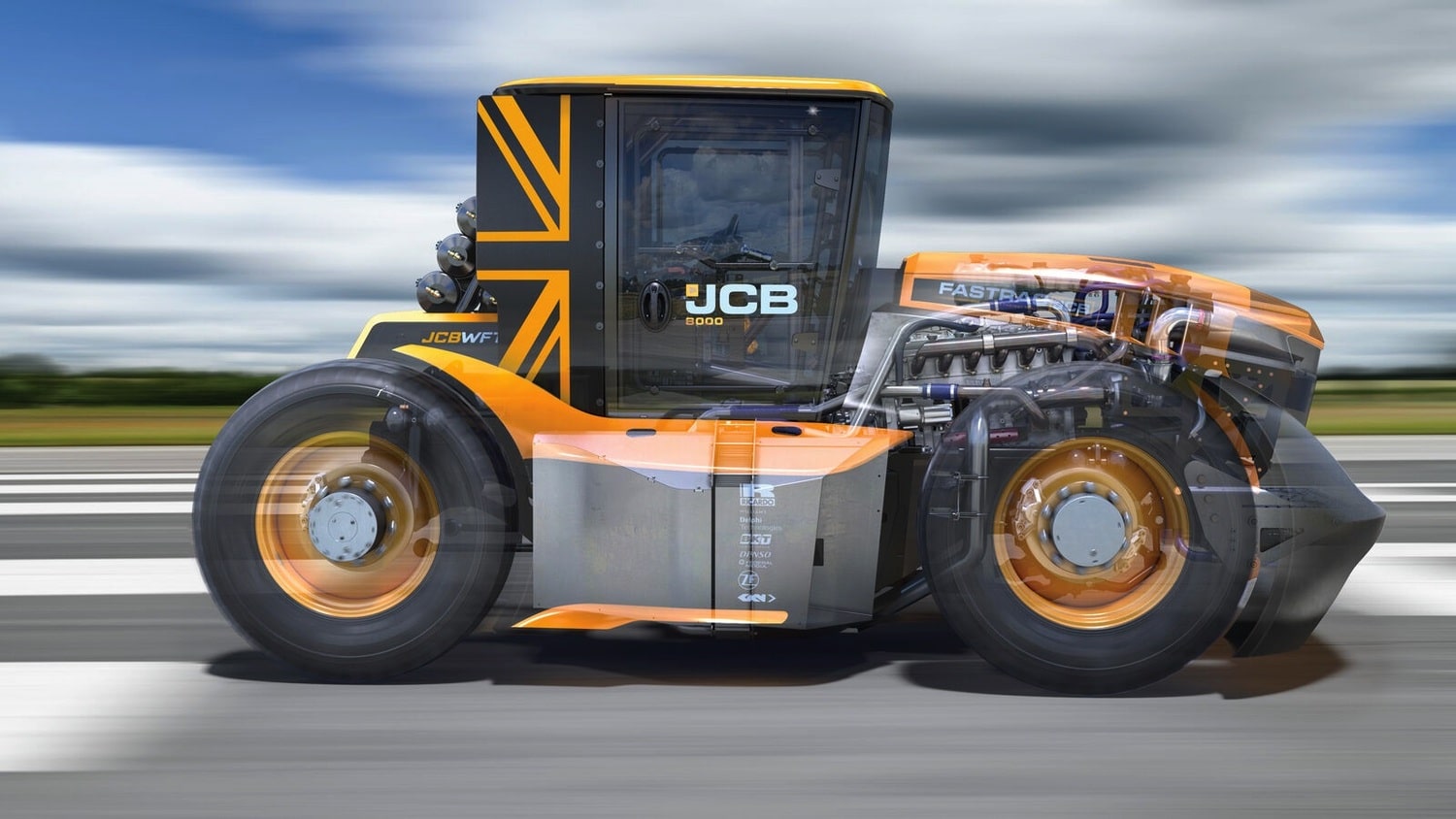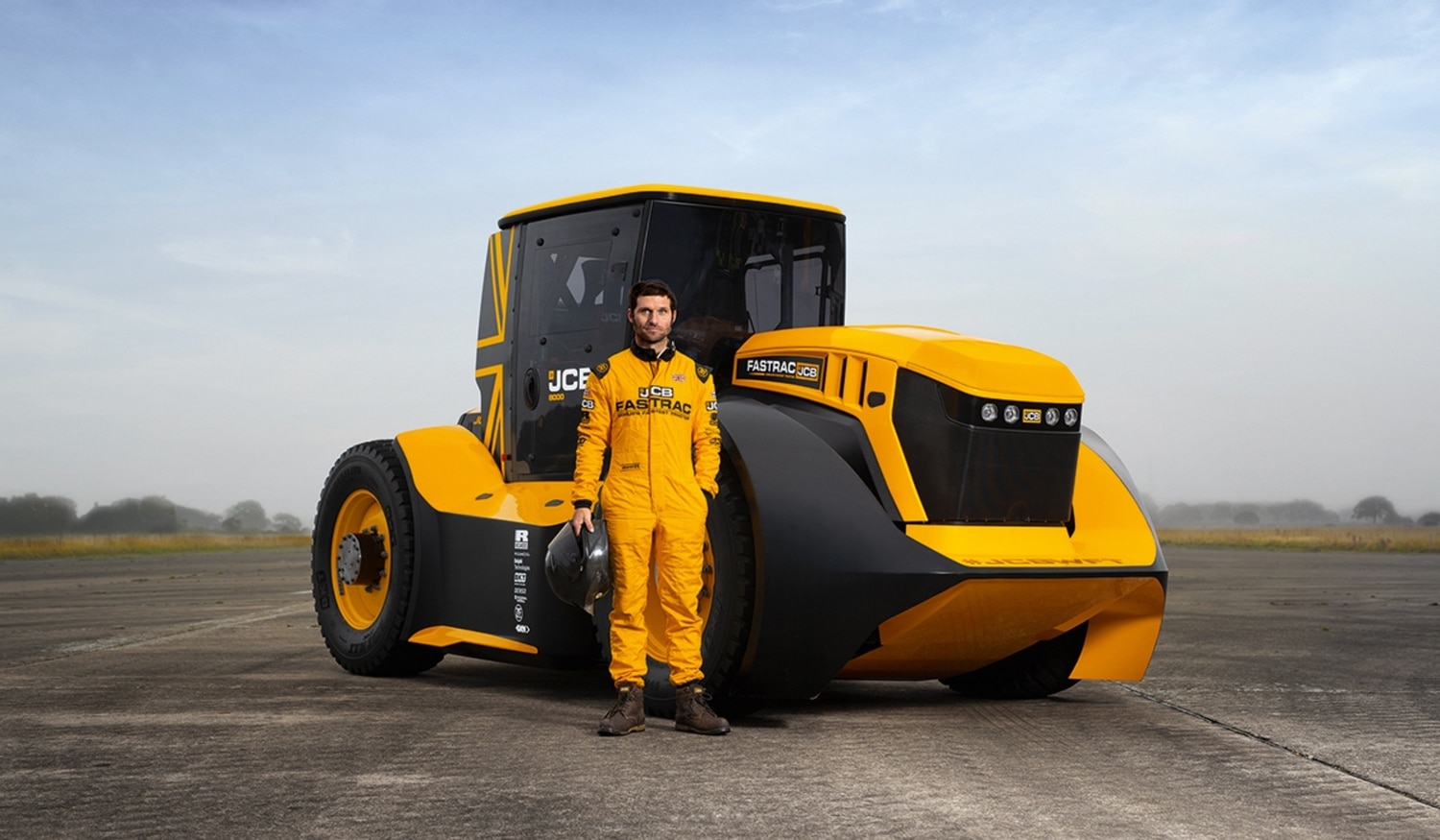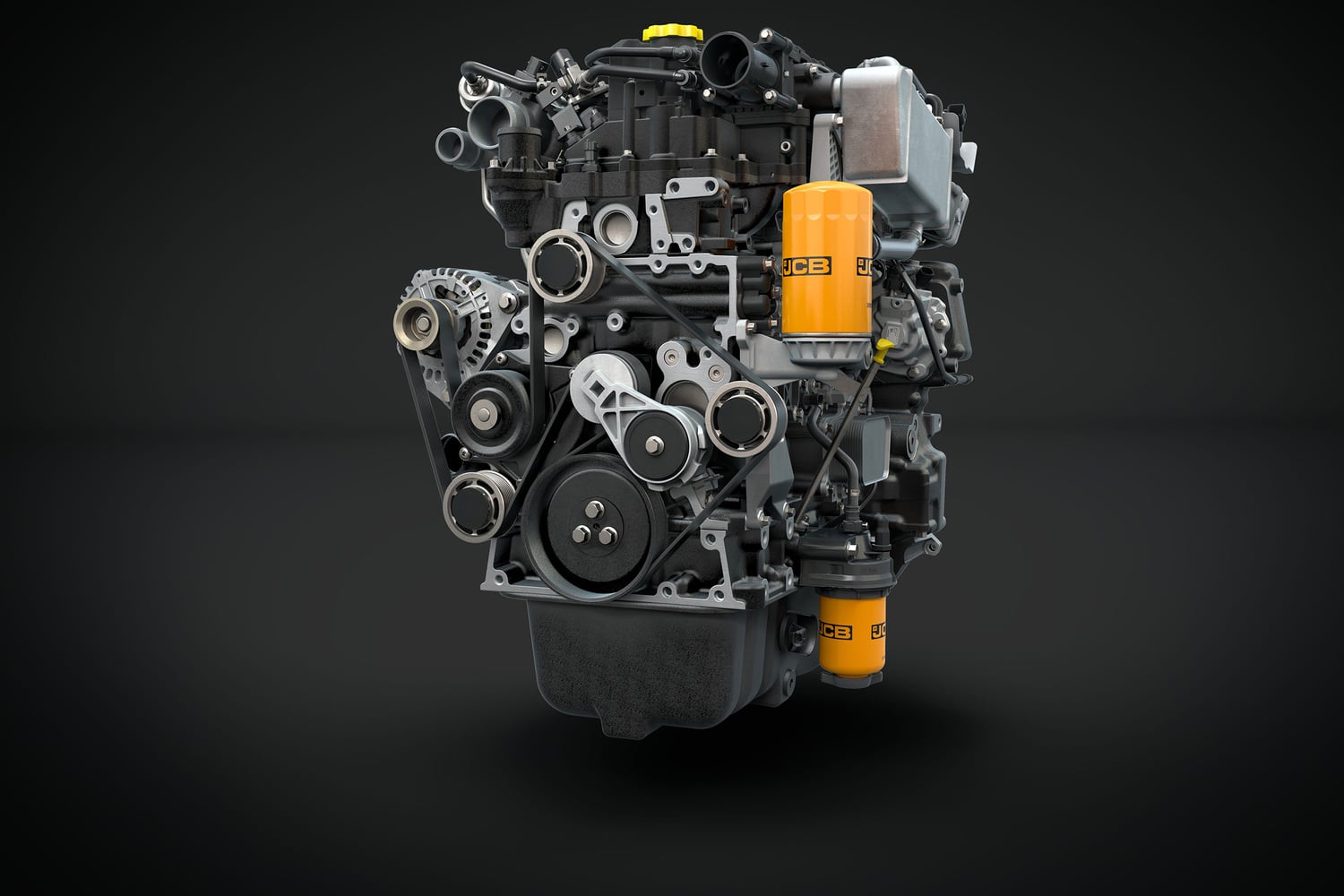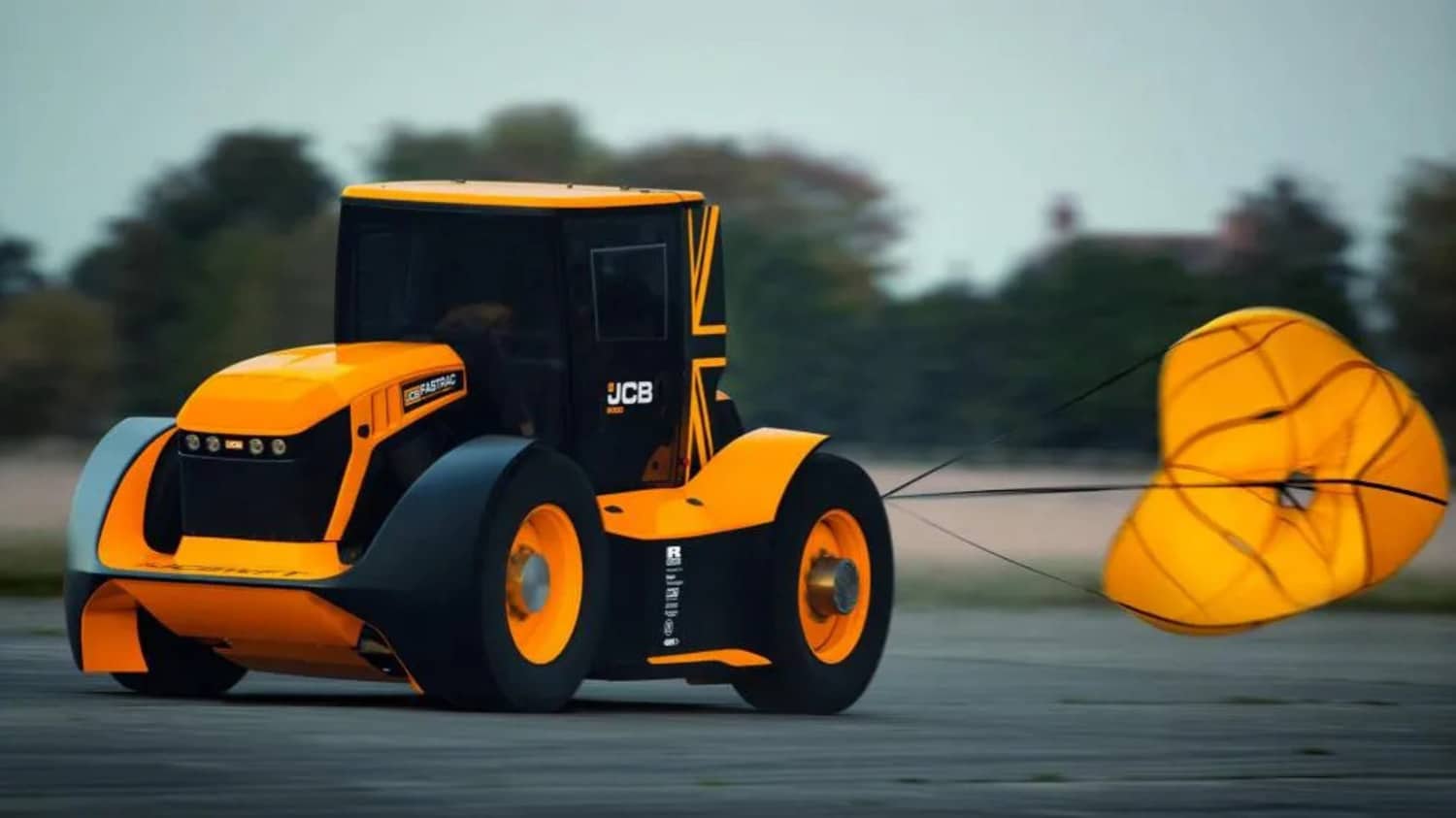
JCB (JC Bamford Excavators Limited) is a Rocester-based British multinational company that has been manufacturing construction, haulage and agricultural equipment for a long time, since its founding in 1945 by Joseph Cyril Bamford (hence its name). Among the equipment, its excavating machines, tractors, etc. stand out, with a total of 300 different types and with 22 factories around the world. However, for engine lovers, surely there is one of the JCB products that stands out above the rest: the JCB Fastrac Two: the fastest tractor in the world.
JCB has been building the unique Fastrac since 1991. All this experience and innovation has made this tractor one of the most productive, versatile, comfortable and safe on the market, as well as being stable and with a large load capacity. And now, to all these qualities we must also add the speed that this Fastract Two can achieve, beating the previous Fastract One, and thus use this as marketing for the firm...
Perhaps many are wondering what is the fastest tractor in the world? Well, here we will answer this question. And that calling everything that is slow a tractor will no longer make sense when you meet this model...
JCB Fastrac One: laying the foundation

Before moving on to the Fastrac Two, you have to go back a bit in time to the Fastrac One. And it is that in 2009, the JCB brand already wanted to break a speed record and position itself as the fastest tractor in the world. It did so during June of that same year, when the base model manufactured by them was modified to reach an average speed of 103,6 mph, that is, equivalent to 166 km/h.
Obviously, the standard JCB Fastrac that is sold around the world for the agricultural sector cannot achieve those standard speeds. However, both the modified and stock are powered by a Dieselmax engine with 6 cylinders and 7.2 liter displacement. The power that this engine is capable of developing is 1016 hp, with a torque of 2500 Nm. The difference with the mod is that it has also been combined with a high-performance racing diesel engine.
One of the descendants of the founder of JCB, and current president, Lord Bamford, praised his team for this achievement:
“When we hit 103,6mph with the Fastrac One in the summer, I was convinced we could go even faster and the JCB team have risen to the challenge by setting this new record. It is an amazing achievement delivered by a young and enthusiastic team of engineers. Everyone involved should be very proud of the role they have played in showcasing the best of British engineering."
In addition, JCB's director of innovation and growth, Tim Burnhope, also took advantage of this achievement to show muscle about the solutions developed by the company and the innovations in aerodynamics to reduce the drag of these tractors, and therefore improve the top speed and minimize consumption.
“Getting a five-ton tractor to safely go 150 mph and stop again is no easy task. We are all very proud to not only have achieved these goals, but to have surpassed them. The biggest challenges have included aerodynamics, weight reduction and performance enhancement. Getting a five tonne tractor to safely reach 217 km/h and come to a stop is no easy task, but we are all very proud to have not only met these goals but exceeded them.”
JCB are already specialists in breaking speed records, they have been doing it since 2006. In fact, that year, they created a Dieselmax Streamliner special, a prototype that is not a modified model for sale, but made specifically to break a fairly important record, since it reached a top speed of 30,092 mph, that is, 563 km/h. He did it in the saline desert of the Bonneville Salt Flats in the United States. And the speed record for this type of vehicle still stands.

JCB Fastrac Two: the fastest tractor in the world

JCB was not satisfied with the previous record, and tried again with another modified series tractor, this time the JCB Fastrac Tow. Currently, this model has the Guinness record for being the fastest tractor in the world. As I said, it is the series model simplified, lightened and improved in performance to be able to reach the speed it set.
The JCB Fastrac Two went on to achieve an average of 135 mph, which is equivalent to 217,6 km/h. A speed that would be worth it to be able to go quietly on a highway, something that is prohibited for conventional tractors, as you well know.
The team in charge of this achievement was that of Staffordshire. These JCB engineers went to work to design and build this modification. He Chosen pilot was Guy Martin (known for his Tourist Trophy races on the Isle of Man), which could be behind the wheel of this tractor at Elvington Airfield in York. Guy is a motorcycle racer and truck mechanic, so he stepped out of his comfort zone to drive a tractor, albeit a very special one…
The team of judges Guinness World Records he was there to officially ratify this incredible feat. Not only did he achieve those 217,6 km/h average speeds in two 1-kilometer races, but at one of the points he even recorded a top speed of 153,771 mph (247 km/h).
What does the fastest tractor in the world have under the hood?

As I have mentioned, the JCB Fastrac used are serial tractors, like the one any farmer can buy, but they were modified of course. Otherwise they wouldn't be the fastest tractor in the world. And to achieve those speeds, the motor used in these machines is:
- JCB patented Dieselmax model engine
- High performance racing diesel fuel (stock can run on biofuels), with hybrid technology
- 7.2 liter displacement, or 7200 cc
- 6 cylinders online
- Turbocharging (with supercharging 230% higher than the standard ones)
- Maximum power of 1016 CV
- 2500 Nm torque
- Injection
- Chilled water cooling
Other modifications

On the other hand, not only work was done on the engine, a lot of effort was also put into lighten the weight, since the steel parts were replaced by aluminum or carbon fiber. This saw the JCB Fastrac go from weighing 8.5 tonnes to only weighing 5 tonnes.
Work was also done to improve the aerodynamics. The cabin was reduced by 300 mm in width and its height by 200 mm. Some wind deflectors and a diffuser were added to improve air penetration by up to 25% more than stock.
As for the cabin where the British ex-driver Guy Martin would get into, it was another of the challenges. Had to create one roll cage for safety. It was developed and approved by the FIA itself. In addition, other changes were needed, such as replacing the standard fuel tank with a racing tank, also for safety reasons in the event of an accident.
Other additional changes were to include 6-point harnesses such as a seat belt, a drag chute to decelerate the vehicle quickly (keep in mind that it is a mass of 5 tons traveling at more than 200). Even the tires were changed, since the standard one is designed to run at a maximum of 80 km/h, and some were installed so that it could reach 260 km/h without breaking the rubber.